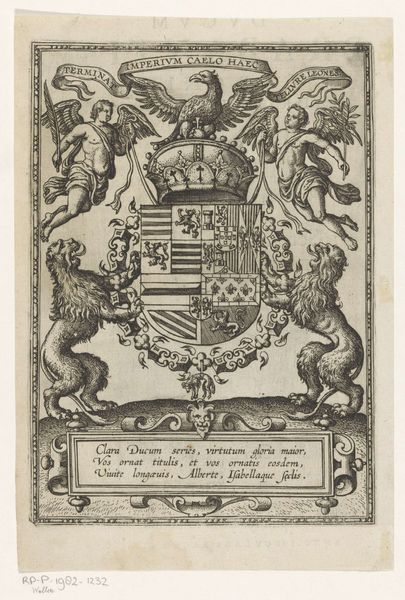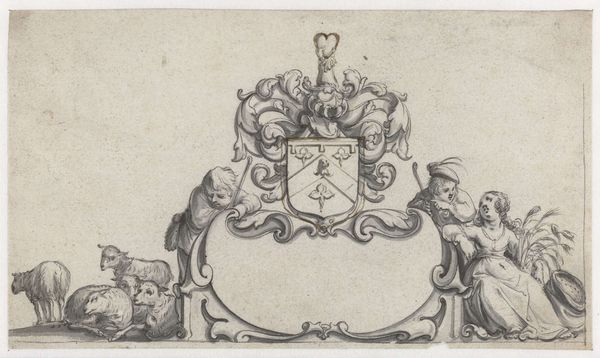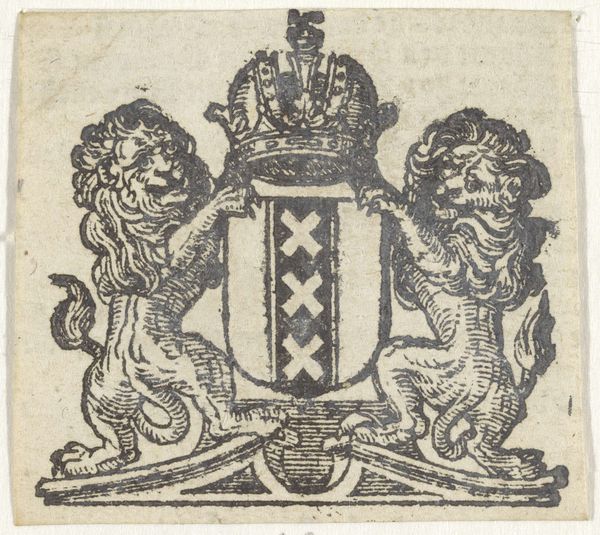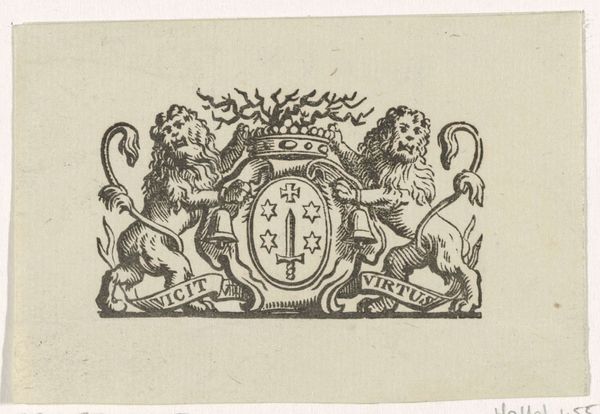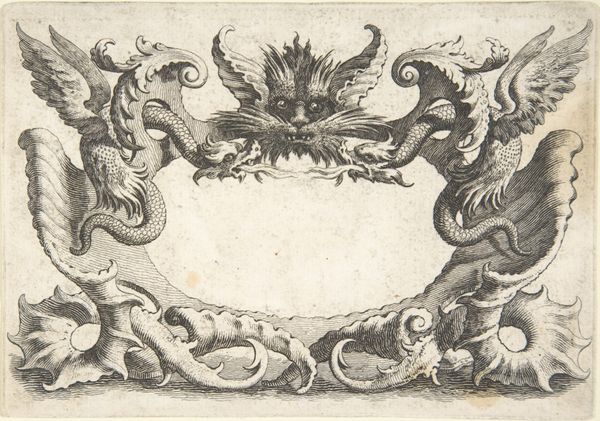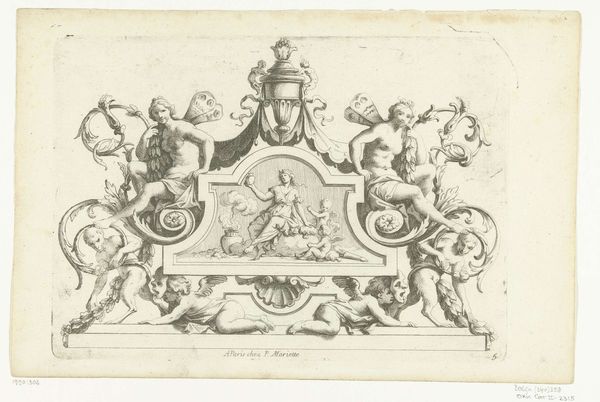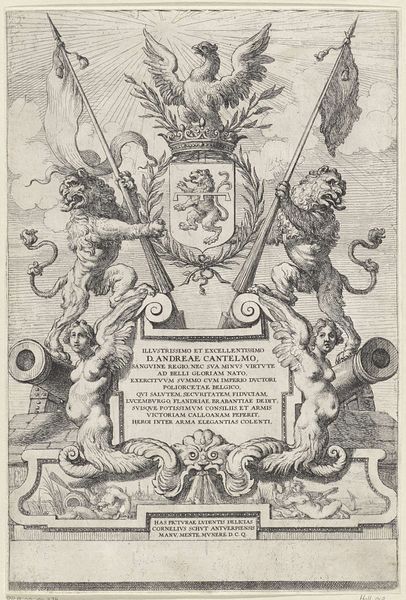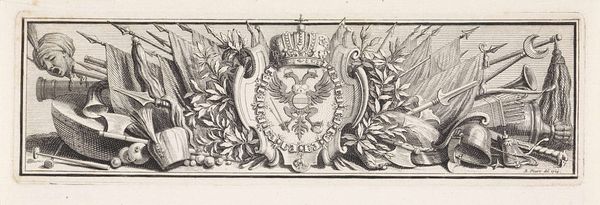
print, engraving
#
pen drawing
# print
#
pen illustration
#
pen sketch
#
old engraving style
#
personal sketchbook
#
geometric
#
pen-ink sketch
#
line
#
pen work
#
sketchbook drawing
#
history-painting
#
sketchbook art
#
engraving
#
doodle art
Dimensions: height 65 mm, width 77 mm
Copyright: Rijks Museum: Open Domain
Simon Fokke created this etching of a helmeted coat-of-arms with a Dutch Lion in 1776. The lion rampant has been a symbol of the Netherlands since the Late Middle Ages. It's a loaded image, connecting the Dutch Republic to a much longer history of European heraldry, nobility, and nation-building. The print is a potent symbol, combining the Dutch Lion with images of military might and national pride. The image would have been instantly recognizable to viewers at the time. The Dutch Republic in the 18th century was a powerful economic force, and the Dutch Lion was a familiar symbol in popular culture. It would have appeared on everything from official documents to popular prints. To understand this print fully, we might want to consult historical texts, political cartoons, and emblem books from the period. These kinds of sources help us to understand the social life of images. It's important to see how images like the Dutch Lion participate in the construction of national identity.
Comments
No comments
Be the first to comment and join the conversation on the ultimate creative platform.

